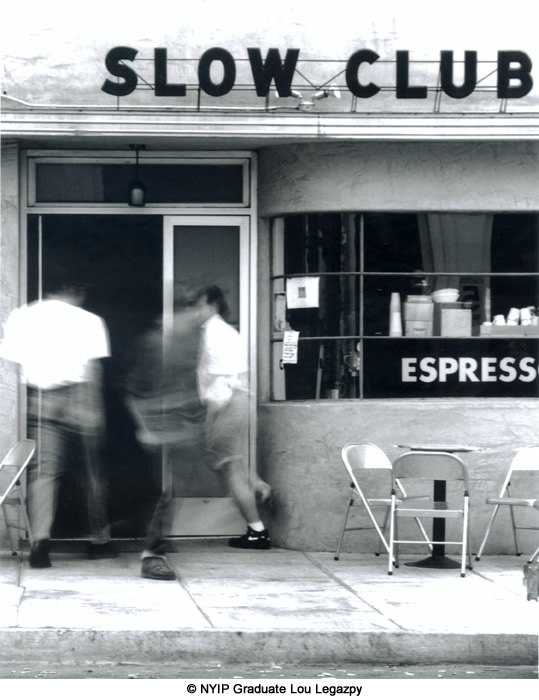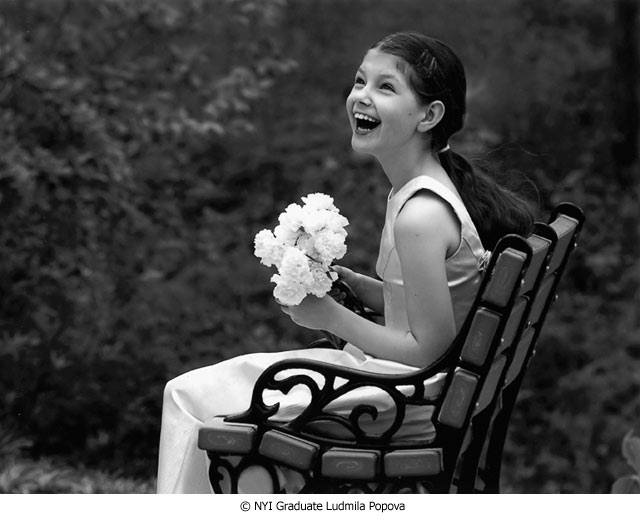Photo by NYIP Graduate Lou Legazpy

In the earliest days of photography enthusiasts were drawn to the camera's ability to deliver thoroughly lifelike images. How real, they said! Why, that portrait of Emily Jane looks just like her, much more realistic than that oil painting in the library! And that view of the Grand Canal in Venice looks like the real thing, doesn't it? Much more naturalistic than the Canaletto painting, and so forth. In short, people were at first stunned by the evident realism in photography.
And, yet, some obvious points were overlooked, points that denied photographyís realistic approach and, instead, proclaimed for all who could and would see that photography offered as much surrealism as it did the rendering of realistic imagery.
Surrealism, by definition and in practice, suggests departures from reality, e.g., the paintings of Magritte, Dali,Tanguy, and De Chirico. In literature, the works of Joyce. In music, Stravinsky, Bartok et al. In photography, Man Ray and to some extent even the great Cartier-Bresson.
We know, for example, that the earliest photography was an abstraction. The world is seen in color, not in shades of gray as the dog would see it, but in color. In all fairness, we also know that we no doubt would have chosen color as the photographic medium—if we then had the wherewithal to produce photography in color. And, so we waited for many years until the Lumiere brothers and others made the first color photographs.
But there is more to surrealistic photography than the absence of naturalistic color. How about the use of selective focus, also called differential focus? The technique was frowned upon in photographyís salad years. Not until Peter Henry Emerson in the late 19th century proclaimed that selective focus was truly realistic and that great depth of field was unnatural did anyone really choose (and appreciate) the technique of using a large aperture deliberately. Photographers, of course, were often forced to use large apertures, with subsequent shallow depth of field, because of the slowness of plates and film of the day. Begrudgingly, selective focus was used but not out of any appreciation of the effects of a shallow depth of field. Then Emerson confounded the photographic world by denouncing his own earlier position and stated unequivocall that selective focus war wrong and that great depth of field was desirable.The battle for surrealistic photography versus "straight" photography continues to rage on and on.
There is no exact answer and probably never will be. Some like surrealistic abstraction in photography; others abhorr it.
NYIP Graduate Lou Legazpy of New York has made a photograph which we have chosen as an example in the surrealistic tradition, and we have chosen it as the Picture of the Month.
It was made in black-and-white, an obvious abstraction, but that is not its only surrealistic attribute. Consider, too, the highly blurred images of the three people in the scene. Since we donít see moving objects that way. We might, I suppose, if there was something abnormal about our vision. If, like El Greco, we had some eye abnormality everything might be blurred, the moving figure elongated, the figures partially disappearing.
There are other surrealistic elements, too. Note the verbalizations: "slow club" and "espress" (the incomplete version of "espresso"). The English equivalent, express, carries with it the connotation of speed (quite the opposite of "slow club").
Three empty chairs perhaps formerly occupied by the three rapidly departing young men. Three static objects reinforcing three kinetic figures—all in a rather dreamlike sequence.
But dreams are never clear cut. There is always evidence of ambiguity. We can always have photographs that are crystal clear in meaning, and we can have others, too, that defy interpretation. The scope of thee photographic medium can encompass both approaches.
The photographer, Lou Legazpy, has deftly blended the elements to produce strong subject matter, ample means of focusing attention on the subject, and ultimately a simplification of the theme.
New York photographers like Lou appreciate photography classes in NYC, but with NYIP's online courses you don't have to be in NYC to get a reat photography education.






